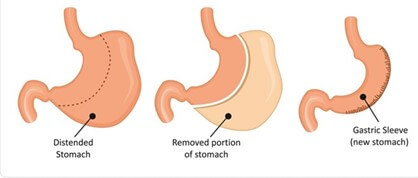Childhood obesity has reached epidemic levels all over the world. According to World Health Organization, the number of overweight or obese infants and young children (aged 0 to 5 years) increased from 32 million globally in 1990 to 41 million in 2016. It has causes numerous health issues like type 2 Diabetes, sleep apnea, respiratory problems and more. According to a study 80% of obese children remain obese as adults as well which is why it is essential that children go through a treatment for this.
Childhood obesity is a very serious health issue that usually begins between the ages of 5 and 6 and in adolescence. You can check whether a child is obese by calculating their Body Mass Index (BMI) and comparing it with the BMI levels of children with the same age. A special chart is used for this.
- Risk of being Overweight: BMI higher than 85% comparatively
- Overweight or Obese: BMI higher than 95% comparatively
As a parent you get worried for your child once you realize they are obese and the next step is finding a treatment. There a multiple way of treating obesity like pharmacological treatment, making changes in eating habits and activity level and bariatric surgery.
Bariatric surgery is a weight loss surgery and its main goal is to provide the maximum benefit with minimum risk. It can reduce obesity health risks like high blood pressure, respiratory problems, type 2 diabetes, fatty liver, sleep apnea, depression. There could a weight loss of 10-35% of total body weight within 2 to 3 years of the surgery.
Treatment options other than bariatric surgery could work for your child but in some cases of severe obesity bariatric surgery is preferred.
*Please note: It is important that before you make a treatment decision you should be well aware of the risks and you should discuss it with your health care provider.
There are some risks accompanied with a serious surgery like this. A few risks include:
- Nutritional Risk
Nutritional deficiencies occur in children before surgery and often remain after surgery. In particular, low levels of iron, vitamin B12, vitamin D and calcium are common problems after RYGB - Impact on Skeleton
Concern exists regarding the impact of bariatric surgery on the skeleton. There is objective evidence of reduced bone mineral density and bone mineral content within a year following gastric bypass surgery. - Informed Consent
A formal legal consent is needed for individuals under the age of 18. The process of consent is very complex and includes an in dept discussion between the doctor, parents and the child. Everyone needs to make a unanimous decision.
The surgery is of different types:
Gastric Bypass Surgery
RYGB provides lasting weight-loss in adolescents with a similar complication rate as in adults. Severe complications are rarely reported. Follow-up visits after the surgery and very important.
Vertical Sleeve Gastronomy

The stomach is cut and made into a smaller tube shape. There are no devices left in place and no intestinal bypass is required. Compared to RYGB it has been performed less often. Preliminary results include reversal of co-morbidities, and excellent weight-loss. It has similar complication rates as adults.
Laparoscopic Adjustable Gastric Banding

This surgery is not yet approved in children under the age of 18 but some institutes use this procedure using “off-label” of banding device. An adjustable band is attached to the upper portion of the stomach making the individual feel full sooner.

